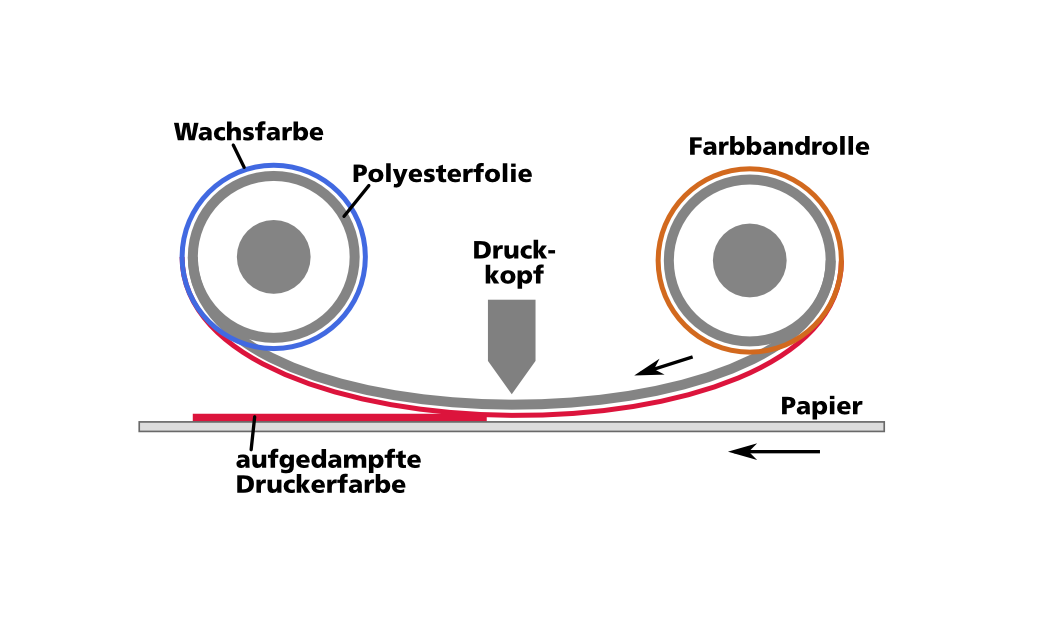
The printer has a thermal ridge, which contains the thermal print head. This consists of an array of small heaters. In addition a moving coil with a ribbon and a second polyester film with a color guard and a wax color synchronously moving with the paper.
When printing with a thermal unit, the thermal ridge is moved past the paper. By heat dissipation of the heating elements, a small thermal time unit is reached, so you can print the paper in a continuous motion, this happens with very high resolution.
We distinguish between three different printing technologies:
One of the first major advantage is its high resolution, which is reached during the printing process and a variety of pressure contrasts are also ensured. Color printing is also possible, the printerhead and the ribbon are protected from contact with the to-be printed paper.? one can expect high reliability when printing, because the thermal printer only has a small amount of mechanical components. ?In addition, digital prints are feasible, without the use of plates.
Unfortunately, there are also disadvantages, such as the high cost of printing, that is caused by the use of color film and the release of ink from the paper when mechanically stressed i.e. placed under sunlight or stored in a warm environment. This mechanical stress causes the print to fade over time.
The thermal printing is used for warnings, as well as labels for textiles. ? ? this printing method is also used to annotate signs of many, due to its long shelf life guarantee. Furthermore devices are also characterized by this technique.